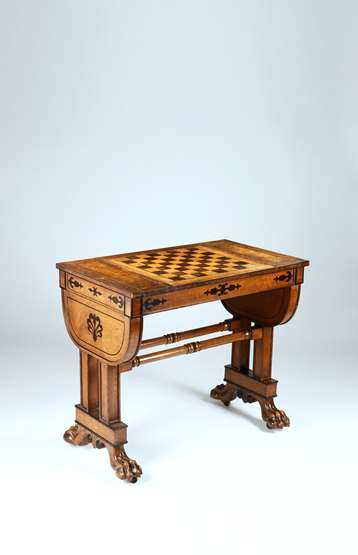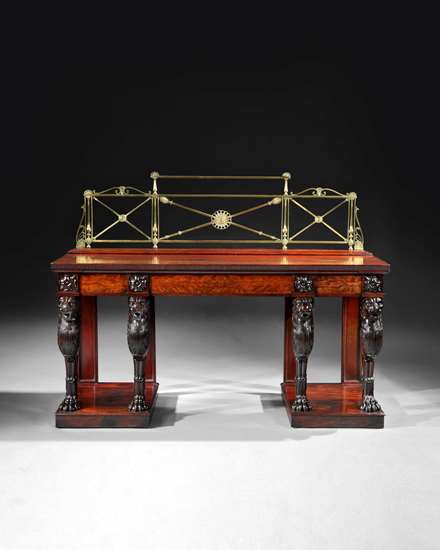A RARE GEORGE II PERIOD LACQUER BUREAU CABINET
Circa, 1740
REF1102
The upper section headed by a cavetto cornice over a pair of fielded panelled doors, opening to reveal an arrangement of drawers, pigeonholes and adjustable shelves all finely lacquered with
scenes of temples, islands, mountains and foliage.The lower section with fall, opening to reveal a fitted interior with a central door, surrounded by drawers incorporating a secret drawer and pigeonholes. The fall, two short and two long drawers all decorated with finely detailed scenes of temples and villages in a mountainous landscape. The sides similarly decorated. The cabinet has survived in a remarkable state of preservation, retaining all its original brass handles, escutcheons and even its original key.
Height: 83 1/2 inches (212 cm) Width: 38 inches (97 cm) Depth: 24 inches (61 cm)
DESCRIPTION
This extraordinary bureau cabinet is a particularly rare and fascinating example. The cabinet,
constructed throughout in oak was made in England and then sailed to China - probably
Canton, to be decorated in the finest gold and black lacquer and then brought back to Britain. Most examples of Chinese export lacquer were entirely made in China and exported to the West. To commission a piece to be decorated in lacquer meant it had to undertake a perilous journey, that would take up to six months at sea each way. The quality and detailing of the lacquer is considerably finer than anything craftsmen in England could achieve and makes this example a particularly special commission.
The art of lacquering originated in China with the discovery of the protective properties of the sap
of the lacquer tree ‘Rhus verniciflua’. When applied to wood or metal, the sap forms a hard,
durable semi-transparent film which can then be used to coat the surface of most materials. The
benefit of the lacquer is that besides being a preservative it provides a smooth surface which can
then be coloured, painted and gilded on. Europe, towards the end of the 17th Century and throughout the 18th Century, became fascinated by all goods associated with China and so many such goods began to be imported
into the West. Organisations such as the East India Company commissioned labourers in China to produce Chinese designs, but in the style of the West. The result was bureau-cabinets of this style with Chinese scenery, frequently being imported into England; the first recorded import of lacquer ware by the East India Company taking place in1683. It is virtually unknown however for a large piece such as this to be made in England and
specially shipped to China to be decorated.
By the 18th Century many countries in Europe began to devise methods of imitating oriental
lacquer, known as Japanning. The main ingredient of the lacquer was not available in Europe so
European imitations were made of gum-lac, seed-lac or shell-lac. The finest examples are difficult to distinguish from true lacquer although the decorations (which are often Chinoiserie) usually give them away. Stalker and Parker are believed to have been two of the leading craftsmen in the art of Japanning having written A Treatise of Japanning and Varnishing, Oxford, 1688, which describes the various ways of imitating Japanese lacquer.
YOU MAY ALSO LIKE
A RARE GEORGE II PERIOD LACQUER BUREAU CABINET


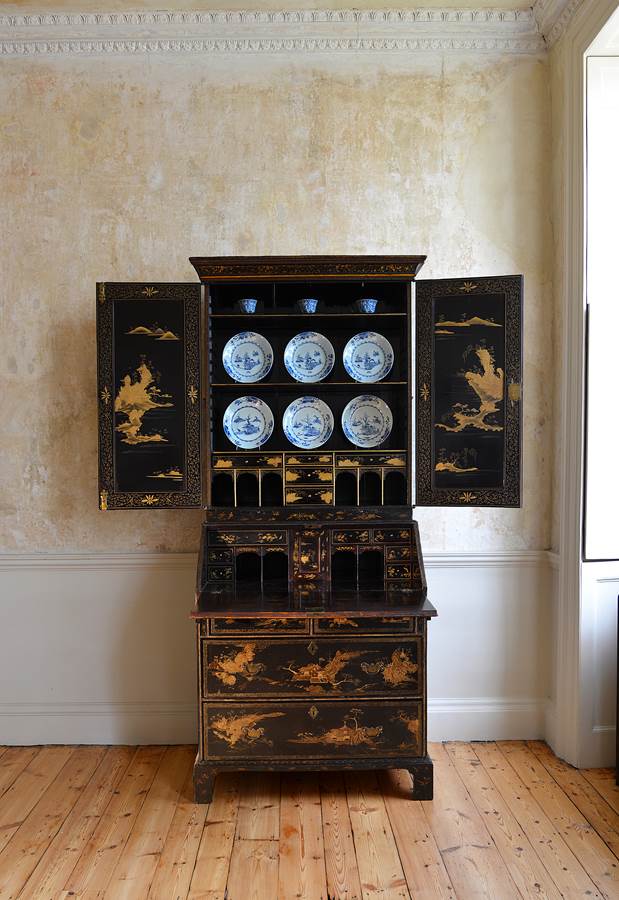
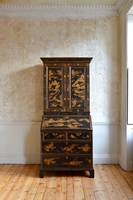
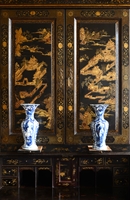
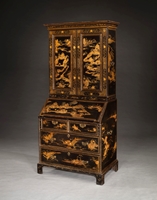
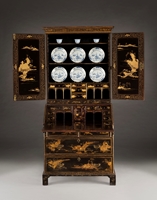
 PRINT
PRINT SHARE
SHARE
